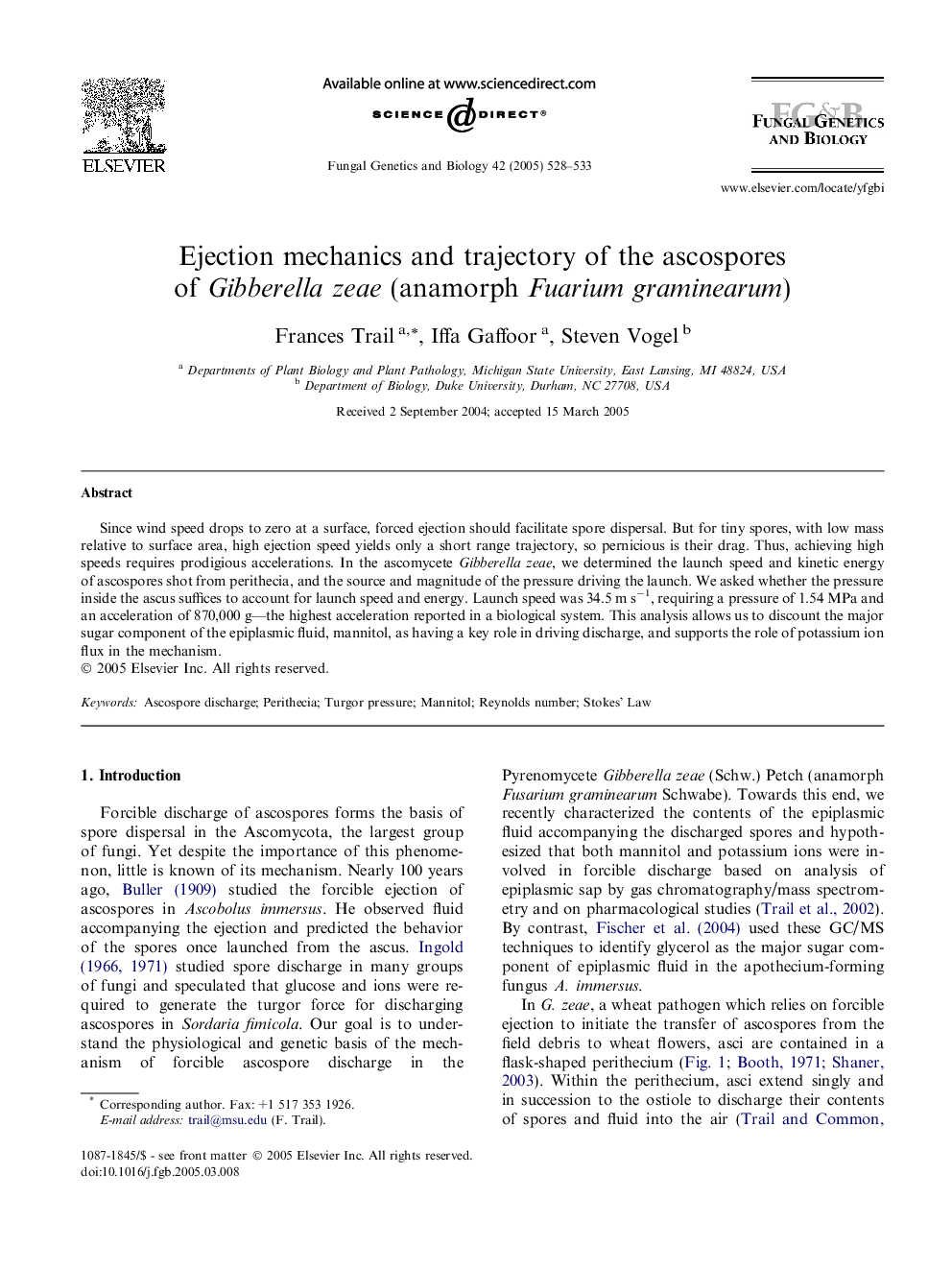| Article ID | Journal | Published Year | Pages | File Type |
|---|---|---|---|---|
| 10939674 | Fungal Genetics and Biology | 2005 | 6 Pages |
Abstract
Since wind speed drops to zero at a surface, forced ejection should facilitate spore dispersal. But for tiny spores, with low mass relative to surface area, high ejection speed yields only a short range trajectory, so pernicious is their drag. Thus, achieving high speeds requires prodigious accelerations. In the ascomycete Gibberella zeae, we determined the launch speed and kinetic energy of ascospores shot from perithecia, and the source and magnitude of the pressure driving the launch. We asked whether the pressure inside the ascus suffices to account for launch speed and energy. Launch speed was 34.5 m sâ1, requiring a pressure of 1.54 MPa and an acceleration of 870,000 g-the highest acceleration reported in a biological system. This analysis allows us to discount the major sugar component of the epiplasmic fluid, mannitol, as having a key role in driving discharge, and supports the role of potassium ion flux in the mechanism.
Related Topics
Life Sciences
Biochemistry, Genetics and Molecular Biology
Cell Biology
Authors
Frances Trail, Iffa Gaffoor, Steven Vogel,
